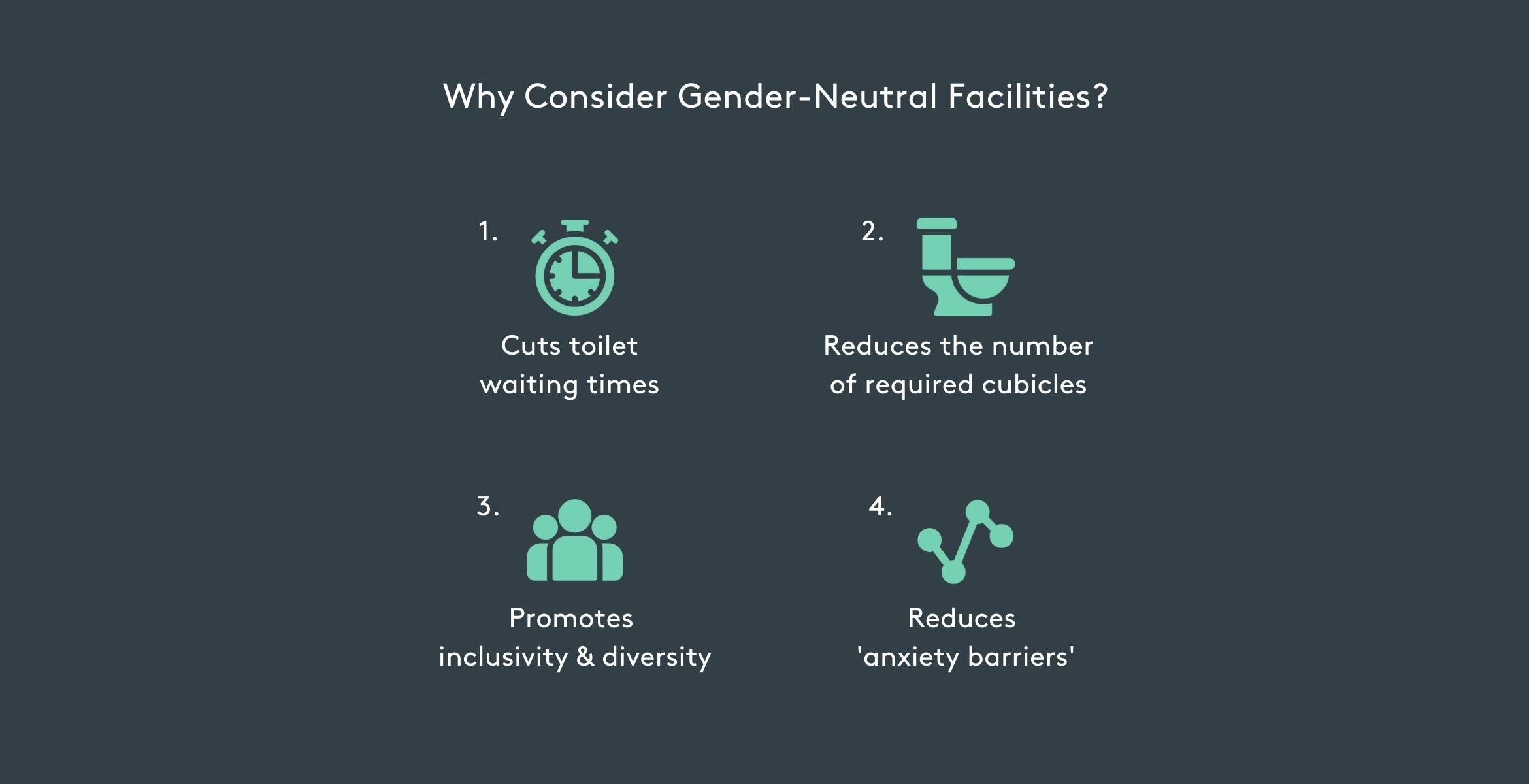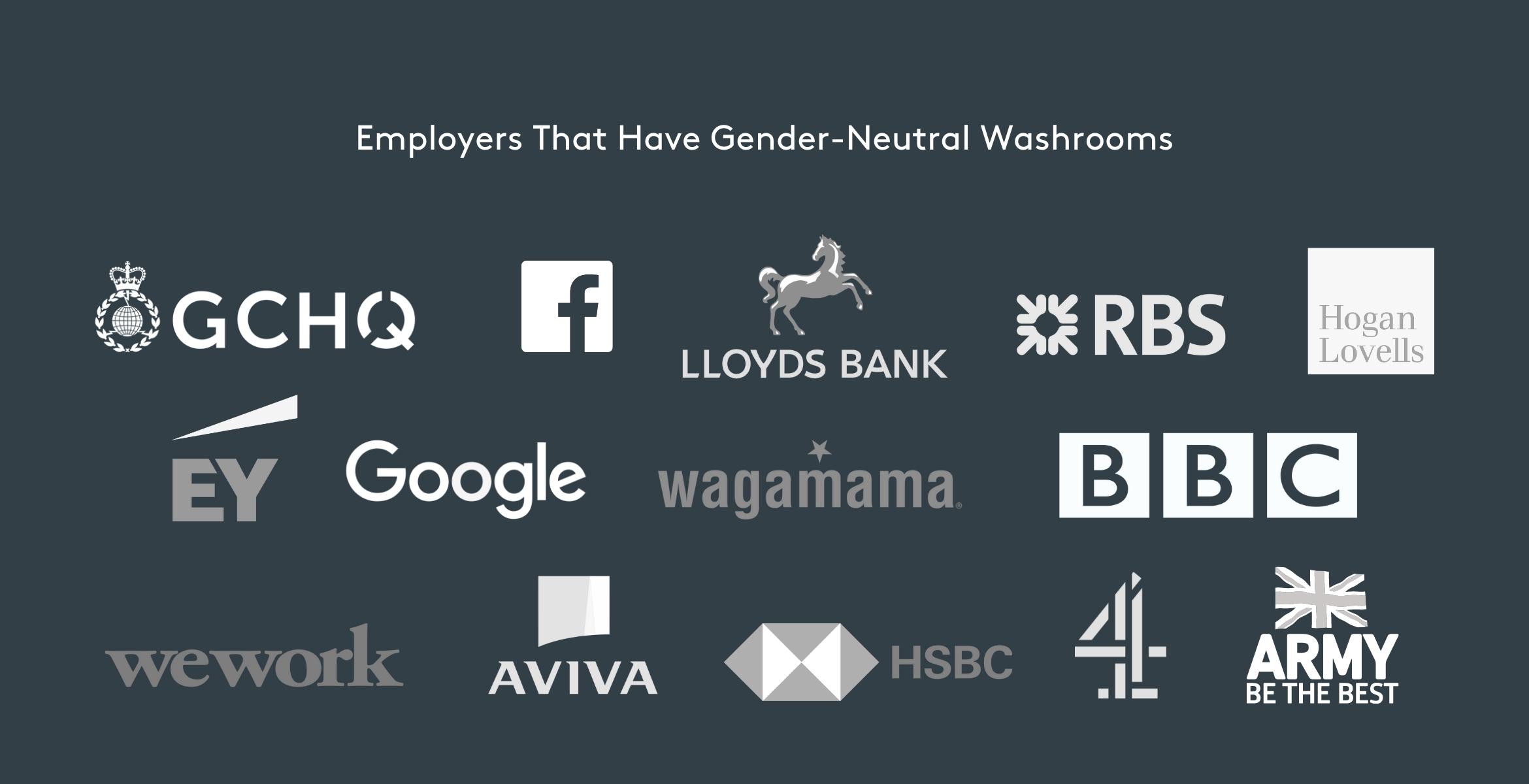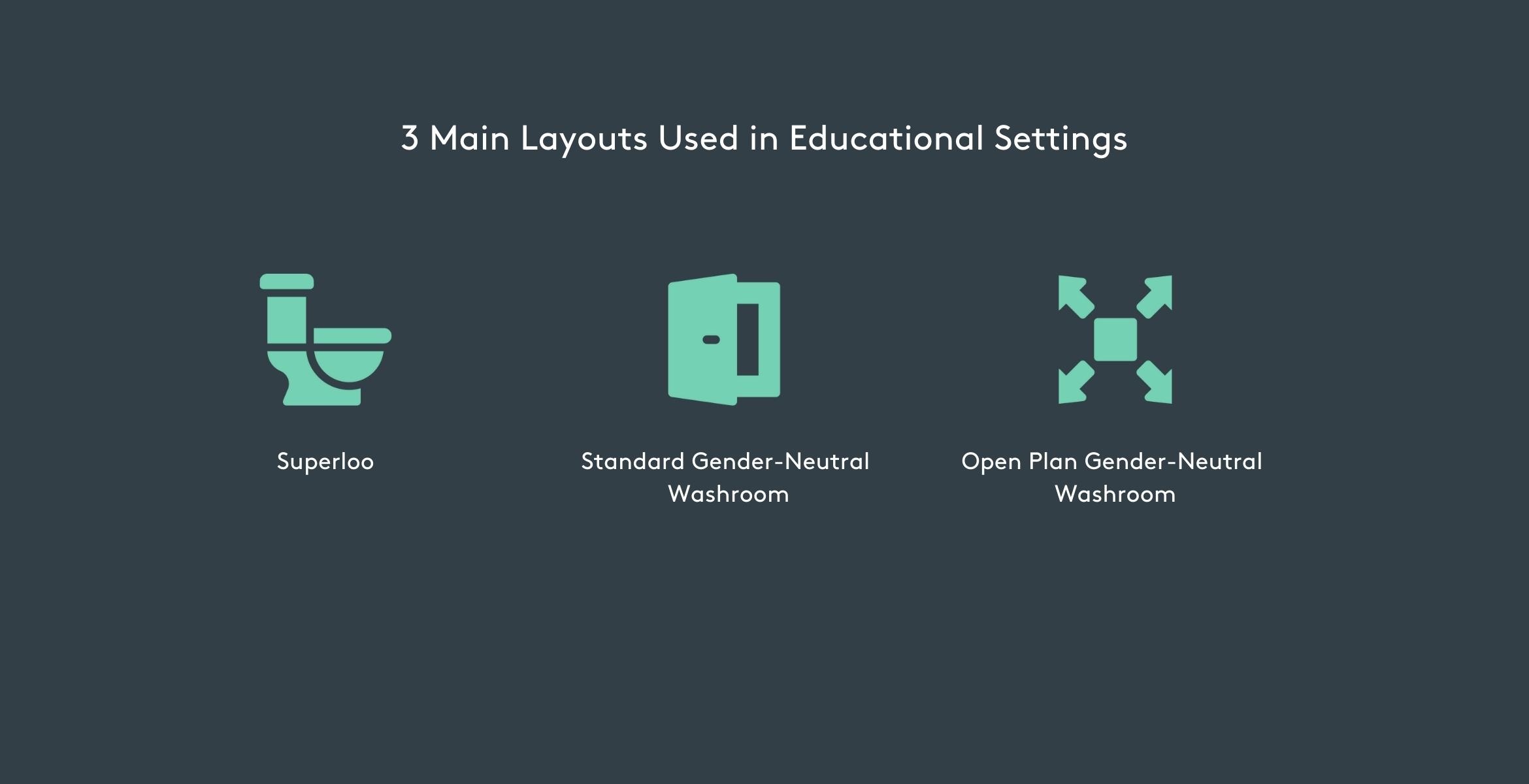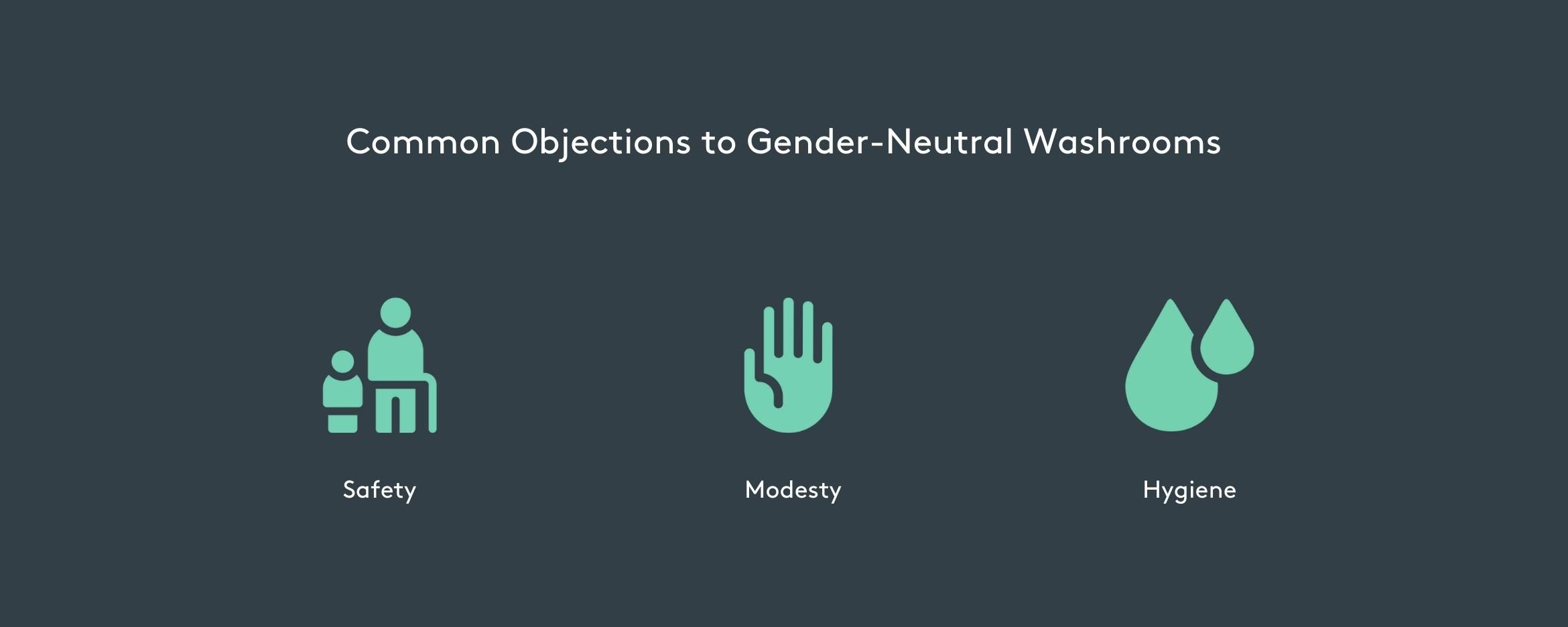Washrooms that can be used by any person of any gender are increasingly popular in commercial places. But all-gender washrooms can be a source of controversy, particularly when they’re badly designed.
With this guide, we’ve tried to fill an important gap in the guidance available to building designers.
This guide is for architects, building designers, employers and anyone else with responsibility for commercial property.
For the purposes of this guide, commercial property includes:
A different set of rules apply to washrooms in schools, so we’ve created a separate guide to designing gender-neutral washrooms for education.

Installing one or more gender-neutral washrooms has a number of benefits for commercial operators. Gender-neutral washrooms can help:
Gender-neutral washrooms are often presented as ‘accomodations’ for trans and other gender-nonconforming people. But all-gender washrooms can also reduce washroom wait times, which benefits all users.
One study by two Belgian ‘queueing theorists’ found that moving from separate male and female-only provision to all-gender washrooms could reduce women’s washroom wait time from six minutes to less than a minute and a half.
Another simulated study found that average wait times decreased by one minute and 20 seconds for women and increased 20 seconds for men.
The fact that women generally take longer than men to use the bathroom explains some, but not all of this difference.
With gender-separated bathrooms, someone might be waiting for a cubicle of their own gender, while a cubicle of the other gender is free. This doesn’t happen with gender-neutral washrooms, which can be said to be more efficient.
If we turn the previous point on its head and say that building users would be willing to accept a ‘status quo’ of waiting times, then commercial property managers can service the same number of people with fewer washrooms overall.
Trans and other gender-nonconforming people often put themselves at risk of harassment and violence when they use gender-seperated washrooms. For this reason, Stonewall found that 48% of trans people don’t feel comfortable using public toilets.
Some people, including those who identify as gender non-binary, may also feel uncomfortable choosing between using male or female facilities.
By installing clearly-signed gender-neutral washrooms, employers, businesses and public service providers can combat harassment and violence against people in these groups.
An inclusive culture helps employers unlock a number of additional benefits. Inclusivity fosters diversity, which helps improve organisational communication, creativity and decision making.

Some British employers that have adopted gender-neutral washrooms include:
Gender-neutral washrooms can also help some cisgendered people participate more actively in daily life.
Specifically, gender neutral washrooms can help parents with young children overcome the anxiety of taking a child to the bathroom if that child isn’t the same gender.
It can also help people who need personal assistance access standard washrooms if their carer is a different gender.
Experts call these everyday dilemmas ‘anxiety barriers’. And gender-neutral washrooms eliminate a number of them.

Gender-neutral facilities come in many different shapes and sizes. There are three main layouts used in commercial spaces:
A self-contained, single-user washroom. Similar to self-contained disabled units, this type of washroom includes private handwashing facilities.
Superloos afford users extra privacy and they can be squeezed into small spaces. It’s also easier to convert these facilities into separate men’s and women’s facilities if needed.
A bigger washroom with multiple cubicles and shared handwashing facilities.
The main difference between a gendered washroom and a gender-neutral washroom is that gender-neutral washrooms will have privacy cubicles and no exposed urinals (like male-only toilets).
Open-plan gender neutral washrooms are designed with no exterior door or barrier. In practice, this means that washrooms can be designed into a corridor or a room with walls replaced by cubicle doors.
This type of washroom makes it easier to monitor a washroom and – in schools – it’s thought that they can reduce bullying and antisocial behaviour.
It will be up to an architect and building managers to decide which type of washroom is best for a project.

Gender-neutral washrooms can be controversial where they are installed. Often, this is because washrooms are poorly designed or implemented.
The Old Vic Theatre and the Barbican Centre both made headlines for the wrong reasons when they turned mens and womens toilets into gender-neutral ‘bathrooms with urinals’ and ‘bathrooms with stalls’. As a result, women avoided using the bathrooms with urinals, while men started using the other washrooms, putting women at a significant disadvantage.
Other concerns around using gender-neutral toilets centre on user problems. In 2018, female Home Office employees initially refused to use new gender neutral toilets because their male colleagues were using cubicles with the door open.
Objections to gender-neutral washrooms generally fall into three main categories:
Architects and building managers need to be mindful of these concerns and, wherever possible, should try to mitigate them through good design.
We’ve talked about the benefits of gender-neutral washrooms, but the simple fact is they’re not right for some types of buildings.
Places where people drink lots of alcohol – like in nightclubs and stadiums – are generally not suited to gender-neutral washrooms. Similarly, we don’t recommend gender-neutral washrooms in places that are too ‘public’, like train stations.
‘Lower-risk’ environments are places like offices, workplaces and theatres.
Whatever layout you choose, gender-neutral washrooms need to be more private. This means using full-height privacy cubicles to fully enclose these spaces.
By using an open-plan layout, without an exterior door, multi-cubicle washrooms can effectively become single-stalled bathrooms from the users perspective.
This type of layout relies on a form of social control. Bathrooms are out in the open, not dingy corners. They’re also easier to monitor by staff and CCTV.
Urinals are time, space and water efficient. But they’re generally bad news in gender-neutral washrooms.
If you do use urinals in a gender-neutral washroom, you need to make sure they are fully enclosed, giving users enough privacy to make everyone comfortable.
Some people will not feel comfortable using gender-neutral facilities. To make sure everyone feels happy and comfortable, building designers should consider offering a combination of gender-neutral and gendered facilities where possible.